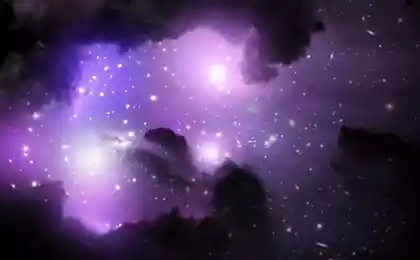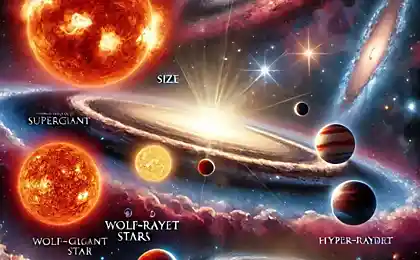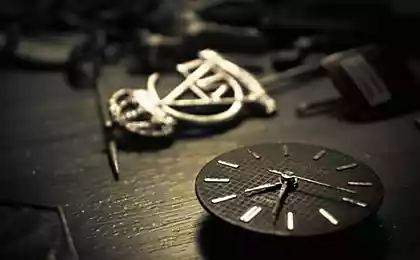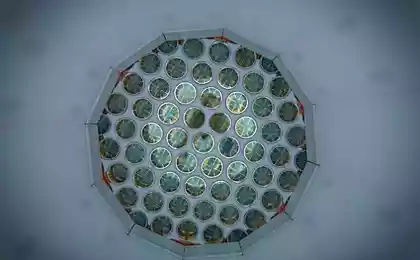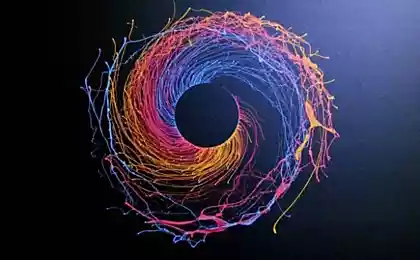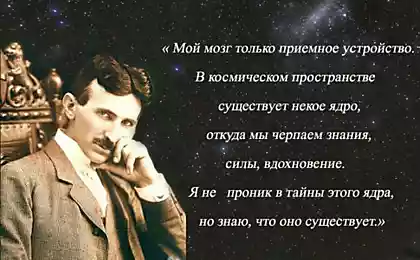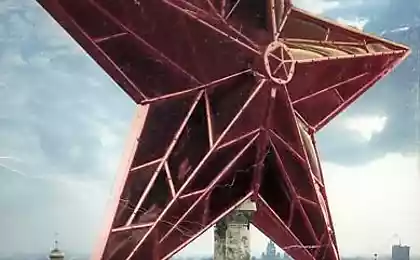607
Ripples of space-time could reveal strange stars
Eighty three million three hundred forty six thousand six hundred fourteen
Looking at the ripples in the fabric of space-time, scientists hope to soon detect "strange stars" — objects created from a fundamentally different particles which is not ordinary matter.
Protons and neutrons make up the nucleus of an atom consists of several fundamental particles known as quarks. There are six types, or "flavors", of quarks: top, bottom, strange, charmed, lovely and true. Each proton or neutron consists of three quarks: the proton of the two top quarks and one down; the neutron two lower and one upper.
In theory, matter can consist of quarks of other flavors. Since 1970-ies scientists suggest that particles of "strange matter" known as straplike, consisting of an equal number of top, bottom, and strange quarks may exist. In principle, strange matter should be heavier and more stable than usual, also it can transform ordinary matter it comes in contact with into strange matter. However, laboratory experiments have not yet created any strange matter, so its existence remains in question.
One of the places where strange matter may appear in a natural way, can be inside neutron stars, remains of stars that die in a catastrophic supernova explosion. Neutron stars are typically small, within 19 kilometers or so — but so dense that their weight is comparable to sun. A piece of neutron star the size of a sugar cube can weigh 100 million tons.
Under the action of the emergency forces of this extreme weight some of the top and bottom quarks that comprise a neutron star, can be transformed into strange quarks, and hence in strange stars composed of strange matter, scientists say.
A strange star made of strange matter, can quickly turn into a strange star and a neutron star orbiting binary star system. Studies have shown that the neutron star received the seed of strange matter from a companion, the strange star, can be a strange star in just 1 millisecond.
Now researchers believe that can detect strange stars, observing gravitational waves — invisible ripples in space-time, first suggested by albert Einstein in the General theory of relativity.
Gravitational waves are emitted by accelerating masses. Really big gravitational waves are emitted by very large masses, for example neutron stars that are merging.
A pair of strange stars should emit gravitational waves that are different from those that emit "normal" neutron star, because strange stars should be more compact, according to scientists. For example, a neutron star with a mass one-fifth of the sun will be more than 30 kilometers in diameter, while the strange star with the same mass will be a maximum of 10 kilometers in diameter.
Scientists suggest that the events associated with the strange star, have to explain two short gamma-ray bursts — gigantic explosions lasting less than 2 seconds — seen in deep space in 2005 and 2007. Observatory LIGO have not detected gravitational waves from these events (GRB 051103 and GRB 070201).
The merger of neutron stars suitable as an explanation of short gamma-ray bursts, but then LIGO should have been to capture gravitational waves from these mergers. However, if both events were involved strange stars, LIGO has not detected any gravitational waves, the researchers note. The more compact star in a binary system of stars, the higher the frequency of gravitational waves.
In the future, scientists hope to detect the event of mergers of strange stars. Using an advanced version of the LIGO Observatory (aLIGO), which will be completed in 2015, scientists expect to detect of the order of 0.13 mergers of neutron stars, strange stars in a year, or one merger every seven years. Using the Einstein telescope, which is currently being developed in the European Union, scientists will be able to record up to 700 such events in a year, or two a day.
There is also the chance that scientists will review the data LIGO on the events of 2005 and 2007 and you will find the signs of strange stars.
"The possibility of re-analysis of LIGO signals GRB 070201 and GRB 051103, taking into account some possible cases involving strange stars, is very interesting," — said the lead author, astrophysicist Pedro Morales, resource Space.com. Together with his colleague Osvaldo Miranda Morales published their findings in a recent issue of the journal Monthly Notices.
Source: hi-news.ru
Looking at the ripples in the fabric of space-time, scientists hope to soon detect "strange stars" — objects created from a fundamentally different particles which is not ordinary matter.
Protons and neutrons make up the nucleus of an atom consists of several fundamental particles known as quarks. There are six types, or "flavors", of quarks: top, bottom, strange, charmed, lovely and true. Each proton or neutron consists of three quarks: the proton of the two top quarks and one down; the neutron two lower and one upper.
In theory, matter can consist of quarks of other flavors. Since 1970-ies scientists suggest that particles of "strange matter" known as straplike, consisting of an equal number of top, bottom, and strange quarks may exist. In principle, strange matter should be heavier and more stable than usual, also it can transform ordinary matter it comes in contact with into strange matter. However, laboratory experiments have not yet created any strange matter, so its existence remains in question.
One of the places where strange matter may appear in a natural way, can be inside neutron stars, remains of stars that die in a catastrophic supernova explosion. Neutron stars are typically small, within 19 kilometers or so — but so dense that their weight is comparable to sun. A piece of neutron star the size of a sugar cube can weigh 100 million tons.
Under the action of the emergency forces of this extreme weight some of the top and bottom quarks that comprise a neutron star, can be transformed into strange quarks, and hence in strange stars composed of strange matter, scientists say.
A strange star made of strange matter, can quickly turn into a strange star and a neutron star orbiting binary star system. Studies have shown that the neutron star received the seed of strange matter from a companion, the strange star, can be a strange star in just 1 millisecond.
Now researchers believe that can detect strange stars, observing gravitational waves — invisible ripples in space-time, first suggested by albert Einstein in the General theory of relativity.
Gravitational waves are emitted by accelerating masses. Really big gravitational waves are emitted by very large masses, for example neutron stars that are merging.
A pair of strange stars should emit gravitational waves that are different from those that emit "normal" neutron star, because strange stars should be more compact, according to scientists. For example, a neutron star with a mass one-fifth of the sun will be more than 30 kilometers in diameter, while the strange star with the same mass will be a maximum of 10 kilometers in diameter.
Scientists suggest that the events associated with the strange star, have to explain two short gamma-ray bursts — gigantic explosions lasting less than 2 seconds — seen in deep space in 2005 and 2007. Observatory LIGO have not detected gravitational waves from these events (GRB 051103 and GRB 070201).
The merger of neutron stars suitable as an explanation of short gamma-ray bursts, but then LIGO should have been to capture gravitational waves from these mergers. However, if both events were involved strange stars, LIGO has not detected any gravitational waves, the researchers note. The more compact star in a binary system of stars, the higher the frequency of gravitational waves.
In the future, scientists hope to detect the event of mergers of strange stars. Using an advanced version of the LIGO Observatory (aLIGO), which will be completed in 2015, scientists expect to detect of the order of 0.13 mergers of neutron stars, strange stars in a year, or one merger every seven years. Using the Einstein telescope, which is currently being developed in the European Union, scientists will be able to record up to 700 such events in a year, or two a day.
There is also the chance that scientists will review the data LIGO on the events of 2005 and 2007 and you will find the signs of strange stars.
"The possibility of re-analysis of LIGO signals GRB 070201 and GRB 051103, taking into account some possible cases involving strange stars, is very interesting," — said the lead author, astrophysicist Pedro Morales, resource Space.com. Together with his colleague Osvaldo Miranda Morales published their findings in a recent issue of the journal Monthly Notices.
Source: hi-news.ru
Ferrari among robots - mechanical Cheetah cheetah
Researchers have found a way to turn sawdust into gasoline
